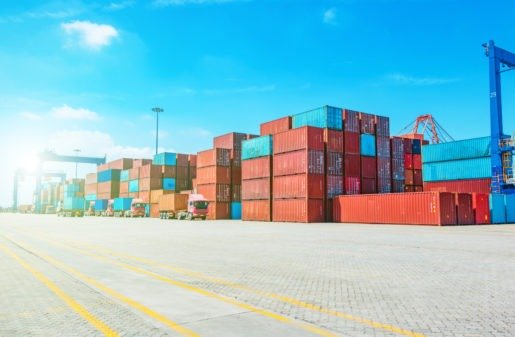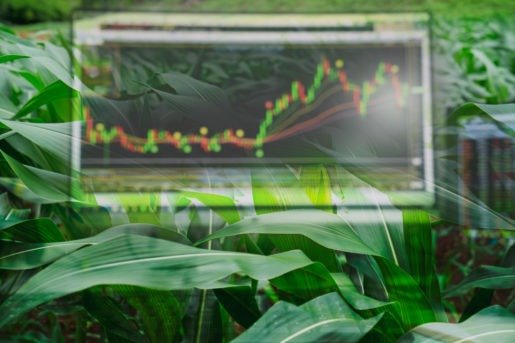Arbitrage is one of the most common ways of profiting from any market. The commodity market is no exception in this matter, where traders get involved in physical arbitrage. Of course, if we want to continue this conversation, we first have to define what exactly arbitrage is.
Explaining physical arbitrage
Arbitrage is the system by which traders simultaneously buy and sell assets to make profits. They try to find the differences in the value of an asset, usually across different markets. This is as opposed to the more traditional trading method, which is buying an asset and selling it after waiting for the price to rise in the same market. Traders generally call arbitrage within the world of commodities physical arbitrage, as it deals in physical assets. Therefore, traders are trying to exploit the differences of opinion in what an asset is worth across the world.
The general idea is to identify places where an asset could be undervalued and sell it where they are valued higher or even overvalued. Not all markets are going to view the same items in the same way, either because of differences in need or because they receive different information. In the modern day and age, trading across markets is easier than ever before.

Physical arbitrage in the modern world
Beforehand, physical arbitrage would have meant slowly finding contacts in new markets and eventually getting your trade through. You would put your goods in great danger when moving to the other market. The further away the market you had an interest in was, the longer you would wait. Moreover, the waiting time would also mean you would often not know the prices in the other market at the present. In the modern day and age, this is all fixed. You can reach practically whichever market you want at the click of a button. There are practically no waiting times, as you can view the values of all sorts of markets worldwide almost instantly.
However, because the world is so much more connected now, prices tend to be a lot more similar across markets than there may have been in the past. However, price differences still exist, albeit smaller. Along with differences in supply and demand, one of the main reasons traders still profit from physical arbitrage is the inefficiency of the market.
The inefficiency of the market
The inefficiency of the market is where the prices that are present in a market do not properly reflect how the public values the item. This can happen for several reasons, such as monopolies, traders’ opinions, transaction costs, and many more. The main point is that some markets are poorer at reflecting the value of an asset than others. This contributes to price differences across markets. Traders can exploit this price difference to ensure profits.
There are some unfortunate consequences for those engaging in physical arbitrage. The very act of engaging in the act makes it less profitable. As traders sell an item to a new market, they are adjusting prices, making individuals more aware of prices in other markets. This results in the efficiency of that market improving. This is one of the primary benefits of arbitrage for the economy and society at large. It is obviously less positive for traders engaging in arbitrage. Arbitrage activities increase or decrease with the state of economies and efficiency of markets. Traders now have to use computer systems to automatically trade across markets, as price differences tend to be small and other traders quickly fill them in with their own programs. It is a self-perpetuating cycle.

There is another benefit that physical arbitrage gives to society at large. This comes in the form of asset transformation.
Transformation
Traders can help transform commodities for different markets through physical arbitrage. For example, say a trader buys an asset by spot market price. Spot market prices may be lower than futures prices in another market, as people value these types of purchases differently. Therefore, the trader can then sell on the asset in a different market, in the form of a futures contract. In this way, traders can help sell on an item into a different market. Someone may have wanted that asset in a futures contract when it was not available, and traders help make it available to them.
Types of physical arbitrage
Traders can transform commodities in several different ways to ensure profits.
Geographic arbitrage is the system by where traders focus on price differences in different geographic locations. If people in one market want an item from a different market, traders can find the most efficient way to bring them their materials. Say if they are concentrating on a buyer from a particular market who wants steel. The trader can concentrate on finding a source for the lowest price possible, finding markets worldwide offering the lowest prices. They do all the work of finding the best prices for their buyer, as it is in their best interests to do so. They may also find shorter, and possibly cheaper, deliveries.
Time arbitrage is the next component. If a particular market wants an asset at a particular time, physical arbitrage can help. A buyer may be having trouble getting an asset in their particular time frame. A trader can help house and store commodities for a short while until the buying market needs it. The buying market can then pay them a premium for their services.

Technical arbitrage is another form of transformation. This is possibly the most literal use of the word transformation so far. A buyer may want quite a very specific form of asset that they have trouble finding so far. They can create different grades of a commodity like oil, that would usually not be easily available for some markets.
Conclusions
Arbitrage is a system whereby traders can move assets from one market to another in order to make profits. Other than making profits for themselves, they are actually quite a big help to the economy at large. They help ensure that markets stay efficient by the very nature of what they do (comparing prices in different markets). Traders can ensure that the market is flexible for buyers and sellers by acting as an intermediary between markets. They help transform the item in several ways, ready for its acceptance into another market.














